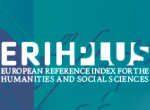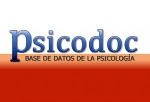Percepción de los futuros docentes de Educación Infantil yPrimaria hacia el uso educativo de los videojuegos
un modelo de ecuaciones estructurales multigrupo
Agencias de apoyo
- Este trabajo deriva de la tesis doctoral titulada “Innovación educativa en Educación Primaria a través de Minecraft Education: análisis sobre el rendimiento académico y pensamiento computacional”
Resumen
El uso educativo del videojuego se ha posicionado en la actualidad como una tendencia investigativa en boga, si bien no existe una correspondencia práctica con ello en su asentamiento como recurso común en las instituciones educativas. Así, el objetivo del presente trabajo se centra en analizar el perfil de los futuros docentes de Educación Infantil y Primaria en lo que refiere al potencial educativo de los videojuegos. Para ello, se opta por la realización de un estudio de corte cuantitativo correlacional transversal y diseño ex post facto prospectivo de más de un eslabón causal, atendiendo a las barreras y adecuación, viabilidad de implementación y efectividad y motivación derivadas del videojuego en la educación. Se observó que la determinación de las limitaciones de uso del videojuego sobre su adecuación contextual e, indirectamente, en la efectividad de sus beneficios educativos, al tiempo que su viabilidad de introducción en las aulas, determinada principalmente por dichas necesidades contextuales, predijo de forma determinante los beneficios educativos que se asociaron al aprendizaje lúdico con medios digitales. Consecuentemente, se establece la pertinencia de reformas en los planes de formación del profesorado como conductor de cambios actitudinales hacia un asentamiento verdadero del videojuego en la educación.
Descargas
-
Resumen678
-
pdf380
Citas
TEXTO PRINCIPAL:
Alonso-García, S., Rodríguez Fuentes, A.-V., Ramos Navas-Parejo, M., & Victoria-Maldonado, J.-J. (2024). Enhancing computational thinking in early childhood education with educational robotics: A meta-analysis. Heliyon, 10(13), e33249. https://doi.org/10.1016/j.heliyon.2024.e33249
Alonso-García, S., Victoria-Maldonado, J. J., García-Sempere, P. J., & Lara-Lara, F. (2023). Student evaluation of teacher digitals skills at Granada University. Frontiers in Education, 7, 1069245. https://doi.org/10.3389/feduc.2022.1069245
Alonso-García, S., Victoria-Maldonado, J. J., Martínez-Domingo, J. A., & Berral-Ortiz, B. (2024). Analysis of self-perceived digital competences in future educators: A study at the university of Granada. Journal of Technology and Science Education, 14(1), 4-15. https://doi.org/10.3926/jotse.2521
Ardito, G., & Czerkawski, B. (2021). The Development of Autonomous Student Learning Networks: Patterns of Interactions in an Open World Learning Environment for Teachers Exploring Teaching with and through Computer Science. Sustainability, 13(16), 8696. https://doi.org/10.3390/su13168696
Avidov-Ungar, O., & Hayak, M. (2022). Attitudes Toward the Integration of Digital Games Into Instruction in Teacher Education Colleges During the COVID-19 Pandemic. Journal of Information Technology Education: Research, 21, 623-639. https://doi.org/10.28945/5037
Ayllón-Salas, P., Lorenzo-Martín, M.-E., Camuñas-García, D., & Hinojo-Lucena, F.-J. (2024). Adicción a los videojuegos entre la población adolescente de Andalucía. Revista CENTRA de Ciencias Sociales, 3(2), 11-30. https://doi.org/10.54790/rccs.89
Aznar-Díaz, I., Raso-Sánchez, F., Hinojo-Lucena, M. A., & Romero-Díaz de la Guardia, J. J. (2017). Percepciones de los futuros docentes respecto al potencial de la ludificación y la inclusión de los videojuegos en los procesos de enseñanza-aprendizaje. Educar, 53(1), 11-28. https://doi.org/10.5565/rev/educar.840
Becker, K. (2007). Digital game-based learning once removed: Teaching teachers. British Journal of Educational Technology, 38(3), 478-488. https://doi.org/10.1111/j.1467-8535.2007.00711.x
Bentler, P. M., & Bonett, D. G. (1980). Significance tests and goodness of fit in the analysis of covariance structures. Psychological Bulletin, 88(3), 588-606. https://psycnet.apa.org/doi/10.1037/0033-2909.88.3.588
Bentler, P. M., & Chou, C.-P. (1987). Practical issues in structural equation modeling. Sociological Methods and Research, 16, 78–117. http://dx.doi.org/10.1177/0049124187016001004
Brett, J. M., & Drasgow, F. (2002). The Psychology of Work: Theoretically based Empirical research. Lawrence Eribaum Associates Publishers.
Camuñas-García, D., Cáceres-Reche, M. P., & Cambil-Hernández, M. E. (2023). Mobile game-based learning in cultural heritage education: A bibliometric analysis. Education + Training, 65(2), 324-339. https://doi.org/10.1108/ET-06-2022-0247
Camuñas-García, D., Cáceres-Reche, M. P., Cambil-Hernández, M. E., & Aznar-Díaz, I. (2025). Diseño de videojuegos sobre el patrimonio y su incidencia en las competencias digitales de los futuros docentes. Campus Virtuales, 14(1), 169-181. https://doi.org/10.54988/cv.2025.1.1520
Chen, F.-F. (2007). Sensitivity of goodness of fit indexes to lack of measurement invariance. Structural Equation Modelling: A Multidisciplinary Journal, 14, 464–504. https://doi.org/10.1080/10705510701301834
Cheung, G. W., & Rensvold, R. B. (2002). Evaluating goodness-of-fit indexes for testing measurement invariance. Structural Equation Modelling: A Multidisciplinary Journal, 9, 233–255. https://doi.org/10.1207/S15328007SEM0902_5
Cochran, W. G., & Díaz, E. C. (1980). Técnicas de muestreo. Compañía Editorial Continental.
Cole, C., Parada, R. H., & Mackenzie, E. (2024). Why and How to Define Educational Video Games? Games and Culture, 19(8), 981-999. https://doi.org/10.1177/15554120231183495
Cózar-Gutiérrez, R., Solé, G., Navío-Inglés, M., & Tirado-Olivares, S. (2024). ¿Enseñar a través de videojuegos? Percepciones de futuros docentes españoles y portugueses sobre su uso en la enseñanza de la historia. RIFOP: Revista Interuniversitaria de Formación del Profesorado, 99(38.2), 161-180. https://doi.org/10.47553/rifop.v99i38.2.99574
DeCarlo, L. T. (1997). On the meaning and use of kurtosis. Psychological Methods, 2(3), 292–307. https://doi.org/10.1037/1082-989X.2.3.292
Dimitrov, D. M. (2010). Testing for Factorial Invariance in the Context of Construct Validation. Measurement and Evaluation in Counseling and Development, 43(2), 121-149. https://doi.org/10.1177/0748175610373459
Esposito, N. (2005, 16-20 de junio). A Short and Simple Definition of What a Videogame Is [Comunicación en congreso]. DiGRA 2005 – “Changing Views – Worlds in Play”, Vancouver, Canadá.
Faul, F., Erdfelder, E., Buchner, A., & Lang, A.-G. (2009). Statistical power analyses using G*Power 3.1: Tests for correlation and regression analyses. Behavior Research Methods, 41, 1149-1160. https://doi.org/10.3758/BRM.41.4.1149
Gravelsina, E., & Daniela, L. (2024). Student Teachers’ Perceptions of a Game-Based Exam in the Genial.ly App. Computers, 13(8), 207. https://doi.org/10.3390/computers13080207
Guan, X., Sun, C., Hwang, G., Xue, K., & Wang, Z. (2024). Applying game-based learning in Primary Education: A systematic review of journal publications from 2010 to 2020. Interactive Learning Environments, 32(2), 534–556. https://doi.org/10.1080/10494820.2022.2091611
Gutierrez, A., Mills, K., Scholes, L., Rowe, L., & Pink, E. (2023). What do secondary teachers think about digital games for learning: Stupid fixation or the future of education? Teaching and Teacher Education, 133, 104278. https://doi.org/10.1016/j.tate.2023.104278
Hair, J. F., Black, W. C., Babin, B. J., & Anderson, R. E. (2019). Multivariate Data Analysis. Cergage.
Hayak, M., & Avidov-Ungar, O. (2020). The Integration of Digital Game-Based Learning into the Instruction: Teachers’ Perceptions at Different Career Stages. TechTrends, 64(6), 887-898. https://doi.org/10.1007/s11528-020-00503-6
Hong, M.R., & Cheng, Y. (2019). Robust maximum marginal likelihood (RMML) estimation for item response theory models. Behavior Research Methods, 51, 573–588. https://doi.org/10.3758/s13428-018-1150-4
Hossein-Mohand, H., Trujillo-Torres, J.-M., Gómez-García, M., Hossein-Mohand, H., & Campos-Soto, A. (2021). Analysis of the Use and Integration of the Flipped Learning Model, Project-Based Learning, and Gamification Methodologies by Secondary School Mathematics Teachers. Sustainability, 13(5), 2606. https://doi.org/10.3390/su13052606
Hsu, C.-Y., Liang, J.-C., & Tsai, M.-J. (2020). Probing the structural relationships between teachers’ beliefs about game-based teaching and their perceptions of technological pedagogical and content knowledge of games. Technology, Pedagogy and Education, 29(3), 297-309. https://doi.org/10.1080/1475939X.2020.1752296
Hu, L., & Bentler, P. M. (1999). Cutoff criteria for fit indexes in covariance structure analysis: conventional criteria versus new alternatives. Structural Equation Modelling: A Multidisciplinary Journal, 6(1), 1-55. https://doi.org/10.1080/10705519909540118
Kim J. H. (2019). Multicollinearity and misleading statistical results. Korean journal of anesthesiology, 72(6), 558–569. https://doi.org/10.4097/kja.19087
Kline, R. B. (2005). Principles and practice of structural equation modeling. Guilford.
Knorr, C., & Zinn, B. (2022). Design and Development of a Collaborative Serious Game to Promote Professional Knowledge Acquisition of Prospective Teachers. En M. E. Auer, H. Hortsch, O. Michler, & T. Köhler (Eds.), Mobility for Smart Cities and Regional Development—Challenges for Higher Education: Proceedings of the 24th International Conference on Interactive Collaborative Learning (pp. 890-904). Springer.
Kocakaya, S., & Kocakaya, F. (2014). A structural equation modeling on factors of how experienced teachers affect the students’ science and mathematics achievements. Education Research International, 490371. http://dx.doi.org/10.1155/2014/490371
Koparan, T. (2022). The impact of a game and simulation-based probability learning environment on the achievement and attitudes of prospective teachers. International Journal of Mathematical Education in Science and Technology, 53(9), 2319-2337. https://doi.org/10.1080/0020739X.2020.1868592
Ley Orgánica 3/2018 de 5 de diciembre de Protección de Datos Personales y Garantías de Derechos Digitales [Versión consolidada]. Boletín Oficial del Estado, 294, de 6 de diciembre de 2018, 119788-119857. https://www.boe.es/eli/es/lo/2018/12/05/3/con
Liu, X., Wachira, P., Koc, S., & Pourdavood, R. (2022). An Exploratory Study of Predictors of Pre-Service Teachers’ Intention to Integrate Computer Games in Mathematics Education. International Journal of Education in Mathematics, Science and Technology, 10(1), 1. https://doi.org/10.46328/ijemst.1827
Lowry, P. B., & Gaskin, J. (2014). Partial least squares (PLS) structural equation modeling (SEM) for building and testing behavioral causal theory: When to choose it and how to use it. IEEE Transactions on Professional Communication, 57(1-2), 123–146. https://doi.org/10.1109/TPC.2014.2312452
Mardia, K. V. (1970). Measures of multivariate skewness and kurtosis with applications. Biometrika, 57(3), 519–530. https://doi.org/10.1093/BIOMET/57.3.519
Mardia, K. V. (1974). Applications of some measures of multivariate skewness and kurtosis in testing normality and robustness studies. Sankhyā, 36(2), 115-128.
Marín Díaz, V., Sampedro, B. E., & Cáceres-Reche, M. P. (2024). Percepciones de los docentes en formación de educación secundaria sobre la dimensión inclusiva de la realidad mixta. Educar, 60(2), 2. https://doi.org/10.5565/rev/educar.1926
Marsh, H. W., & Hocevar, D. (1985). Application of Confirmatory Factor Analysis to the Study of Self Concept: First and Higher Order Factor Models and their Invariance Across Groups. Psychology Bulletin, 97(3), 562-582. https://psycnet.apa.org/doi/10.1037/0033-2909.97.3.562
Montero, I., & León O. G. (2005). Sistema de clasificación del método en los informes de investigación en Psicología. International Journal of Clinical and Health Psychology, 5(1), 115-127.
Muijs, D. (2022). Doing Quantitative Research in Education with IBM SPSS Statistics. SAGE.
Pedrosa, D. (2024). Co-regulated learning in initial teacher education: Strategies adopted by students during the development of ICT integration projects in Basic Education. Educational Media International, 61(1-2), 42-56. https://doi.org/10.1080/09523987.2024.2357476
Pina Portela, D. M. (2012). Contributo das Técnicas de Análise Fatorial para o Estudo do Programa “Ocupação Científica de Jovens nas Férias” [Tesis de maestría, Universidade Abierta]. RepositorioAberto. http://hdl.handle.net/10400.2/2536
Preacher, K. J., & Hayes, A. F. (2004). SPSS and SAS procedures for estimating indirect effects in simple mediation models. Behavior Research Methods, Instruments, & Computers, 36, 717–731. https://doi.org/10.3758/BF03206553
Prensky, M. (2001). Digital Game-Based Learning. McGraw-Hill.
Rosseel, Y. (2012). lavaan: An R Package for Structural Equation Modeling. Journal of Statistical Software, 48(2), 1–36. https://doi.org/10.18637/jss.v048.i02
Rüth, M., Birke, A., & Kaspar, K. (2022). Teaching with digital games: How intentions to adopt digital game-based learning are related to personal characteristics of pre-service teachers. British Journal of Educational Technology, 53(5), 1412-1429. https://doi.org/10.1111/bjet.13201
Sass, D. A., & Schmitt, T. A. (2013). Testing measurement and structural invariance: implications for practice. En T. Teo (Ed.), Handbook of Quantitative Methods for Educational Research (pp. 315-345). SensePublishers.
Shonfeld, M., & Greenstein, Y. (2021). Factors promoting the use of virtual worlds in educational settings. British Journal of Educational Technology, 52(1), 214-234. https://doi.org/10.1111/bjet.13008
Suárez Rodríguez, J. M., & Jornet Meliá, J. M. (1994). Evaluación referida al criterio: construcción de un test criterial de clase. En V. García-Hoz Rosales (Coord.), Problemas y métodos de investigación en educación personalizada (pp. 419-443). Rialp.
Tabachnik, B. G., & Fidell, L. S. (2007). Using Multivariate Statistics (5th ed.). Allyn and Bacon.
Trujillo-Torres, J. M., Aznar-Díaz, I., Cáceres-Reche, M. P., Mentado-Labao, T., & Barrera-Corominas, A. (2023). Intergenerational Learning and Its Impact on the Improvement of Educational Processes. Education Sciences, 13(10), 1019. https://doi.org/10.3390/educsci13101019
Tsai, F.-H., Hsiao, H.-S., Yu, K.-C., & Lin, K.-Y. (2022). Development and effectiveness evaluation of a STEM-based game-design project for preservice primary teacher education. International Journal of Technology and Design Education, 32(5), 2403-2424. https://doi.org/10.1007/s10798-021-09702-5
Yeo, S., Rutherford, T., & Campbell, T. (2022). Understanding elementary mathematics teachers’ intention to use a digital game through the technology acceptance model. Education and Information Technologies, 27(8), 11515-11536. https://doi.org/10.1007/s10639-022-11073-w
Yin, X.-Q., Scherr, S., Jin, L., Gaskin, J., & Wang, J.-L. (2022). Impressions matter more than privacy: The moderating roles of affordances in the relation between social anxiety and online safety-seeking behaviors. Cyberpsychology: Journal of Psychosocial Research on Cyberspace, 16(3), 1. https://doi.org/10.5817/CP2022-3-1
Zhang, Y., & Chen, J. (2021). Using Design Thinking in Educational Game Design: A Case Study of Pre-service Teacher Experience. En R. Li, S. K. S. Cheung, C. Iwasaki, L.-F. Kwok, & M. Kageto (Eds.), Blended Learning: Re-thinking and Re-defining the Learning Process. (pp. 253-263). Springer.
ANEXO:
Agus, M., Bonaiuti, G., & Marras, A. (2024). Psychometric Validation of the Robotics Interest Questionnaire (RIQ) Scale with Italian Teachers. Journal of Science Education and Technology, 33(1), 68-83. https://doi.org/10.1007/s10956-023-10075-8
Aznar-Díaz, I., Raso, F., Hinojo, M. A., & Romero-Díaz, J. J. (2017). Percepciones de los futuros docentes respecto al potencial de la ludificación y la inclusión de los videojuegos en los procesos de enseñanza-aprendizaje. Educar, 53(1), 11-28. https://doi.org/10.5565/rev/educar.840
Bentler, P. M., & Bonett, D. G. (1980). Significance tests and goodness of fit in the analysis of covariance structures. Psychological Bulletin, 88(3), 588-606. https://psycnet.apa.org/doi/10.1037/0033-2909.88.3.588
Brett, J. M., & Drasgow, F. (2002). The Psychology of Work: Theoretically based Empirical research. Lawrence Eribaum Associates Publishers.
Cattell, R. B. (1968). The Scientific Use of Factor Analysis in Behavioral and Life Sciences. Plenum Press.
Cohen, J. (1988). Statistical power analysis for the behavioral sciences (2nd ed.). New York: Routledge.
Cortina, J. M. (1993). What is coefficient alpha? An examination of theory and applications. Journal of Applied Psychology, 78(1), 98-104. https://doi.org/10.1037/0021-9010.78.1.98
Fornell, C., & Larcker, D. F. (1981). Evaluating structural equation models with unobservable variables and measurement error. Journal of Marketing Research, 18(1), 39-50. https://doi.org/10.2307/3151312
Hair, J. F., Black, W. C., Babin, B. J., Anderson R. E., & Tatham, R. L. (2006). Multivariate Data Analysis. Prentice Education.
Hair, J. F., Hult, G. T. M., Ringle, C., & Sarstedt, M. (2016). A Primer on Partial Least Squares Structural Equation Modeling (PLS-SEM). SAGE.
Hair, J. F., Hult, G. T. M., Ringle, C., Sarstedt, M., Danks, N. P., & Roy, S. (2022). Partial Least Squares Structural Equation Modeling (PLS-SEM) using R: A Workbook. Springer.
Hong, M.R., & Cheng, Y. (2019). Robust maximum marginal likelihood (RMML) estimation for item response theory models. Behavior Research Methods, 51, 573–588. https://doi.org/10.3758/s13428-018-1150-4
Hu, L., & Bentler, P. M. (1999). Cutoff criteria for fit indexes in covariance structure analysis: conventional criteria versus new alternatives. Structural Equation Modelling: A Multidisciplinary Journal, 6(1), 1-55. https://doi.org/10.1080/10705519909540118
Kaiser, H. F. (1974). An index of factorial simplicity. Psychometrika, 39(1), 31-36. https://doi.org/10.1007/BF02291575
Kenny, D. A., & Milan, S. (2012). Identification: A nontechnical discussion of a technical issue. En R. H. Hoyle (Ed.), Handbook of structural equation modeling (pp. 145–163). The Guilford Press.
Kocakaya, S., & Kocakaya, F. (2014). A structural equation modeling on factors of how experienced teachers affect the students’ science and mathematics achievements. Education Research International, 490371. http://dx.doi.org/10.1155/2014/490371
Ley Orgánica 2/2006, de 3 de mayo, de Educación [Versión consolidada]. Boletín Oficial del Estado, 106, de 4 de mayo de 2006, 17158-17207. https://www.boe.es/eli/es/lo/2006/05/03/2/con
Marsh, H. W., & Hocevar, D. (1985). Application of Confirmatory Factor Analysis to the Study of Self Concept: First and Higher Order Factor Models and their Invariance Across Groups. Psychology Bulletin, 97(3), 562-582. https://psycnet.apa.org/doi/10.1037/0033-2909.97.3.562
Muijs, D. (2022). Doing Quantitative Research in Education with IBM SPSS Statistics. SAGE.
Pina Portela, D. M. (2012). Contributo das Técnicas de Análise Fatorial para o Estudo do Programa “Ocupação Científica de Jovens nas Férias” [Tesis de maestría, Universidade Abierta]. RepositorioAberto. http://hdl.handle.net/10400.2/2536
Rosseel, Y. (2012). lavaan: An R Package for Structural Equation Modeling. Journal of Statistical Software, 48(2), 1–36. https://doi.org/10.18637/jss.v048.i02
Tabachnik, B. G., & Fidell, L. S. (2007). Using Multivariate Statistics (5th ed.). Allyn and Bacon.
Ventura-León, J. L., & Caycho-Rodríguez, T. (2017). El coeficiente Omega: un método alternativo para la estimación de la confiabilidad. Revista Latinoamericana de Ciencias Sociales, Niñez y Juventud, 15(1), 625-627.
Los artículos que se publican en esta revista están sujetos a los siguientes términos:
1. El Departamento de Métodos de Investigación y Diagnóstico en Educación de la Universidad de Murcia (España), junto con el Servicio de Publicaciones de la Universitdad de Murcia (Editum) son los editores de la revista REIFOP y conserva los derechos patrimoniales (copyright) de los artículos publicados, permitiendo la reutilización de las mismos bajo la licencia de uso indicada en el punto 2.
2. Las obras se publican en la edición electrónica de la revista bajo una licencia Creative Commons Reconocimiento-NoComercial-SinObraDerivada 3.0 España (texto legal). Se pueden copiar, usar, difundir, transmitir y exponer públicamente, siempre que: i) se cite la autoría y la fuente original de su publicación (revista, editores y URL de la obra); ii) no se usen para fines comerciales; iii) se mencione la existencia y especificaciones de esta licencia de uso.
3. Condiciones de auto-archivo. Se permite y se anima a los autores a difundir electrónicamente las versiones pre-print (versión antes de ser evaluada) y/o post-print (versión evaluada y aceptada para su publicación) de sus obras antes de su publicación, ya que favorece su circulación y difusión más temprana y con ello un posible aumento en su citación y alcance entre la comunidad académica. Color RoMEO: verde.















